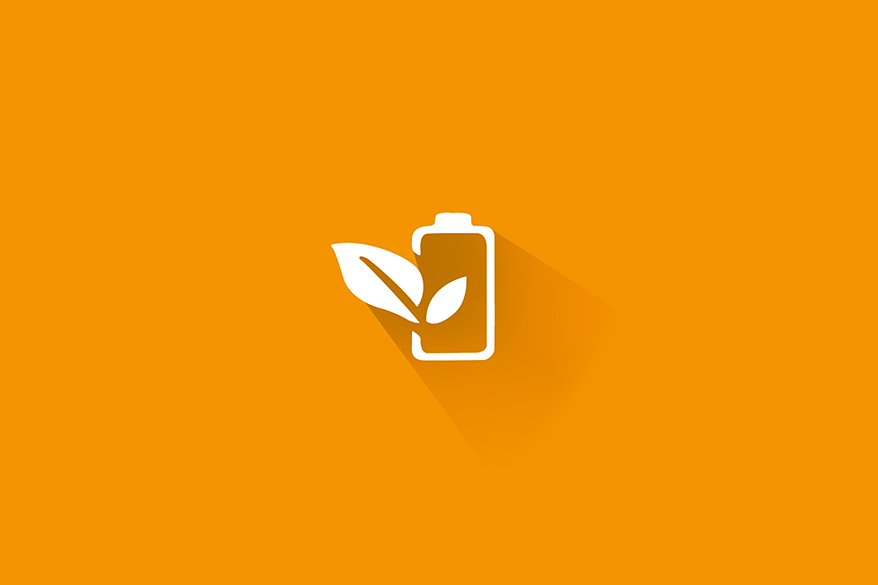Polymer Electrolyte Lithium-Ion Battery
Sep 23, 2019 Pageview:1514
Lithium-ion electrolyte polymer battery, also known as LIP or Li-poly is a rechargeable battery made of polymer electrolyte rather than a liquid electrolyte, with the makeup of a semi-solid polymer gel. These gel polymers are becoming better alternatives over liquid electrolyte and this is seen by the increase in researching interest and rise in use. This material is used largely because of their weight criticality. Brought about to put a halt to the dangers of liquid electrolytes found in Li-ion the Lithium-ion battery has been confirmed to be a safer alternative.
The Polymer electrolyte has been of invaluable use to the electronics industry, providing manufacturers with the ability to expand their designs and fit it to every new technological challenge. Its steady growth in the market has seen it in more than one mobile device, laptop, and new-age gadgets, most of which lean to the higher end of cost. So for greater efficiency and quality, the result is in more pay. Its lightweight properties are a plus to it, with manufacturers using it to achieve those creations that require minimum weight
Structural Design of Polymer Electrolyte Lithium-Ion Battery
· The polymer electrolyte battery has a complex design and makeup that has enabled it to take up its ever-increasing part in engineering.
· Made to resist electrode shorting of pressure heights of 1500ips the Li-poly is a lick proof, solid polymer with an intrinsically safe cell.
· The polymer electrolyte Lithium-ion has a short circuit of current height of 85A in its battery pack enabling it to withstand surges without damaging effects.
· Built with a cell resistant of an overcharge of 20 volts and a discharge of up to a rate of 3c, a Li-poly will not flame only seize to function.
· Li-poly's safety measures are better in comparison to regular lithium-ion batteries and are more powerful as well.
· PIN is also an eco-friendly system with is nickel-based chemistries. This ensures they don’t need expert handling or special disposal possess. Making it usable to the none elite class of users.
The basic needs of the solid polymer electrolyte are solubility to the conductive lithium salt, an interface that works, high ion conductivity, the transition temperature of low glass and Li anode stability. All of which makes the derivatives of PEO as well as itself high polymer matrixes.
These solid electrolytes are classified into three;
· The dry Solid Polymer Electrolyte,
· The gelled Solid Polymer Electrolyte and
· The porous Solid Polymer electrolyte.
A LIP cell: A LIP cell has four parts, two electrodes, negative and positive, a separator and an electrolyte.
The electrodes can further be broken into three-ways:
The positive contains a lithium-transition-metal-oxide, a conductive additive, and a polymer binder of polyvinylidene fluoride.
The negative contains carbon, a conductive additive, and a polymer binder.
The generator could be a polyethylene, a microporous film or polypropylene which makes it a polymer itself, so that even if the cell contains a liquid electrolyte, it has a polymer component.
Development of Polymer Electrolyte Lithium-Ion Battery
The first research was done by in 1988 on gelled polymer electrolytes and ever since various efforts have been made to advance the usage and efficiency in polymer electrolyte lithium-ion batteries.
Solid polymer electrolyte cells are yet to be fully used in the electronics market since several details surrounding it are yet to be discovered by researchers. There have been hybrid models made by a cross between the classic lithium-ion battery which uses liquid electrolyte and a plastic, solid lithium-ion battery.
The outcome of the electrolytes is most times calculated in a half cell configuration over an electrode of metallic lithium. Hence the system becomes a lithium metal cell.
In a polymer medium, the solid polymer electrolyte otherwise known as SPE is a solvent-free salt solution solid polymer. That is a compound of lithium bis, imide and a weight poly of high molecule (ethylene oxide or trimethylene carbonate).
And there are other designs on a polymer electrolyte cell liquid inorganic ionic like 1- butyl-3-methylimidazolium tetrafluoroborate as plasticizers in a matrix.
The Technology of Polymer Electrolyte Lithium-Ion Battery
Polymer electrolyte lithium-ion batteries have since its creation taken a large role in the advancement and development of machines. They have been used by manufacturers such as KIA and Hyundai in their experimental rechargeable vehicles and had been hailed for their efficiency. This praise is given due to the Li- Poly's working method. Polymer electrolyte Lithium-ion battery works on the principle of intercalation and deintercalation just like other lithium-ion cells. The intercalation and deintercalation of lithium ions form positive and negative electrode material, providing a conductive medium with the liquid electrolyte.
A microporous separator is set between the electrodes to ensure they do not touch each other directly, allowing only the ions and not the electrode particles to move from side to side.
A Li-poly cell's voltage lies in its chemistry and varies from a discharged voltage of 2.7-3.0 and a fully charged voltage of 4.2. While lithium- metal- oxide-based cells have a discharged voltage of 1.8 -2.0 to a charged voltage of 3.6 - 3.8 ( for those based on lithium-iron-phosphate (LiFePO4). The voltage rating is specified in the datasheets of the products, stating that any electronic circuit that can manage to ensure that the cells won't be overcharged or discharged.
Unlike the cylindrical lithium-ion and prismatic cells that contain metallic rigid cases, Li-poly cells are flexible, polymer laminate cases. They require a specialized charger especially for the battery packs with a series of cells, to monitor the charging over cells to ensure even charge. The polymer electrolyte Lithium-ion batteries have now been used in gadgets like radio-controlled aircraft, cars, model trains. They have been made available in configurations reaching 6400mAh, with a cell voltage of 4.5. This voltage level has placed the Li-poly as better than the regular batteries making it a regular component in aircraft constructions.
- Prev Article: How To Reset The Lithium-Ion Battery
- Next Article: Solar Charge Controller for Lithium-Ion Battery
Leave Message
Hottest Categories
-
Hottest Industry News
-
Latest Industry News











